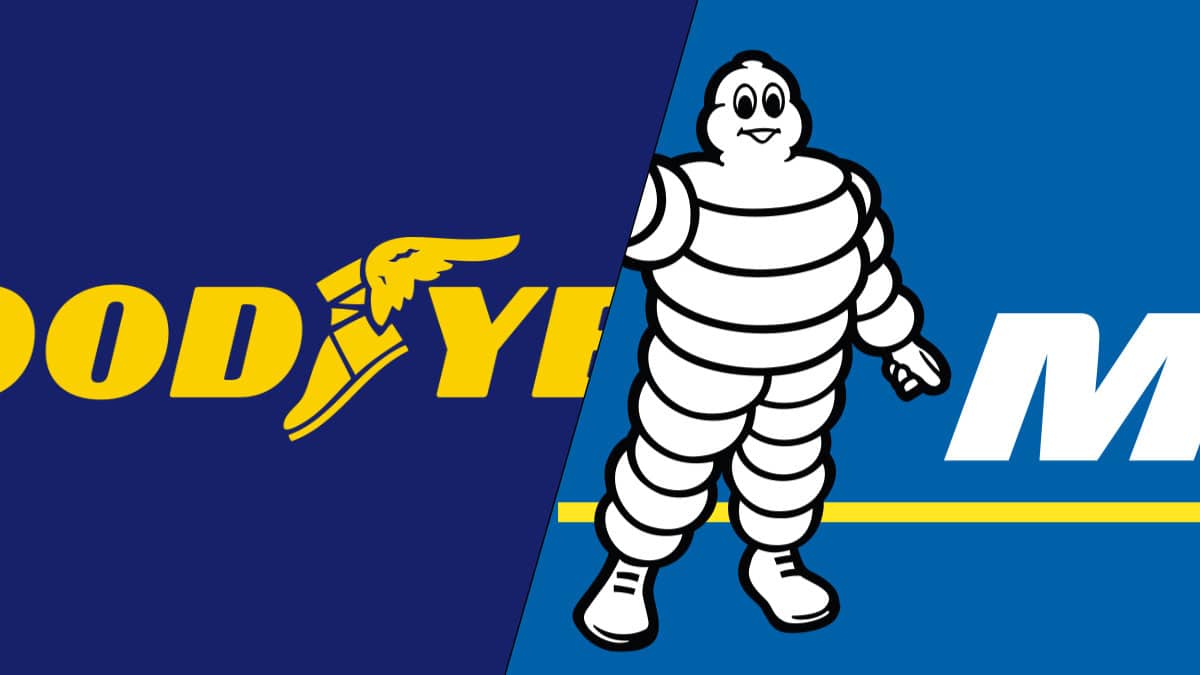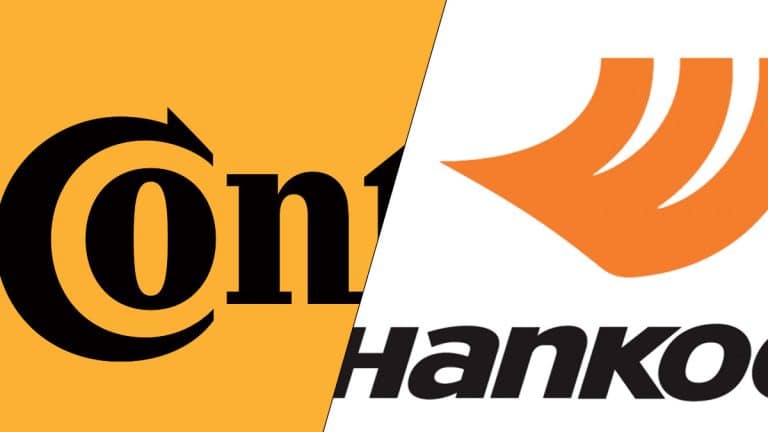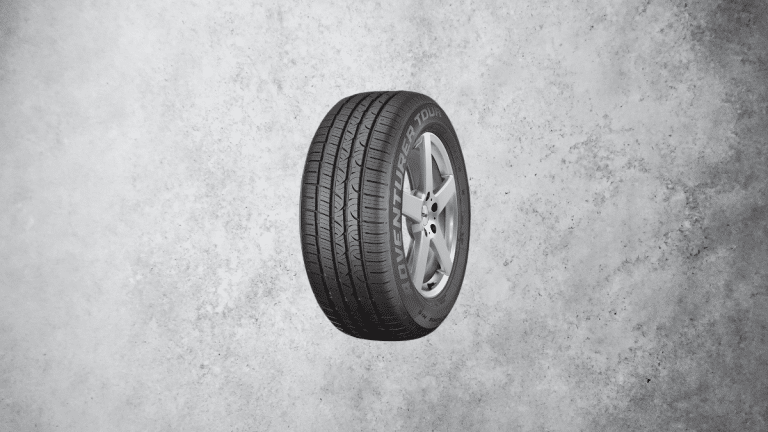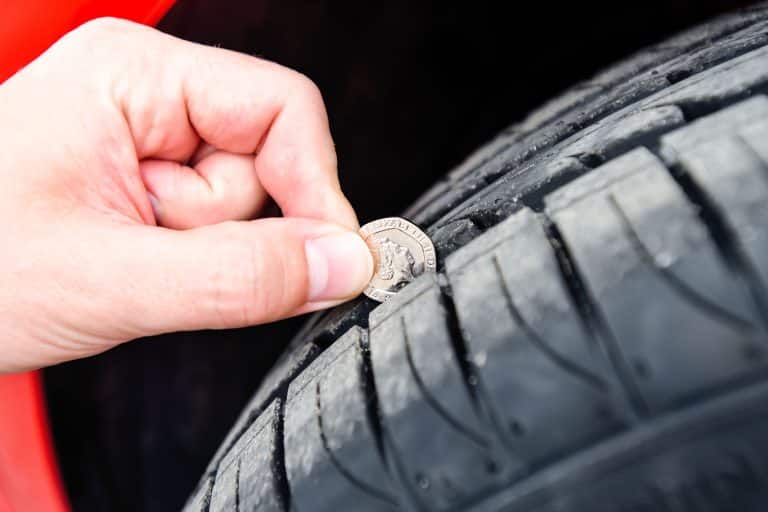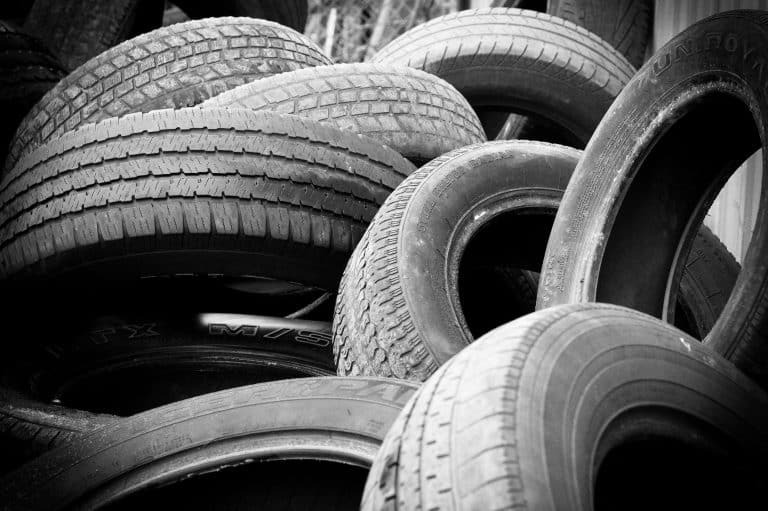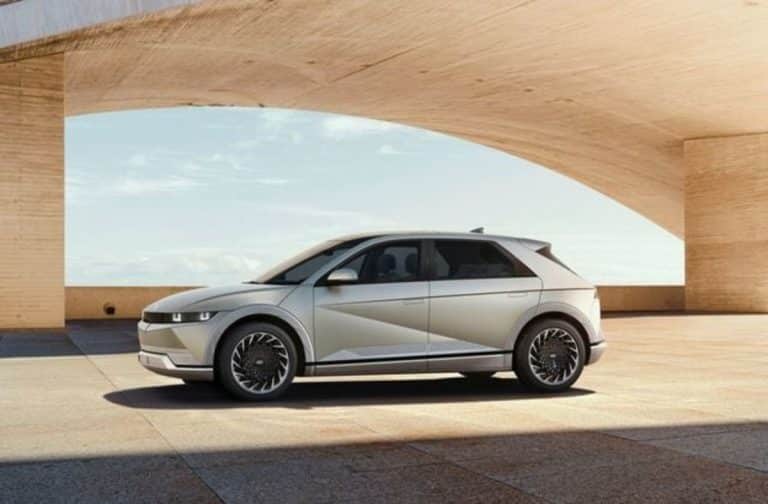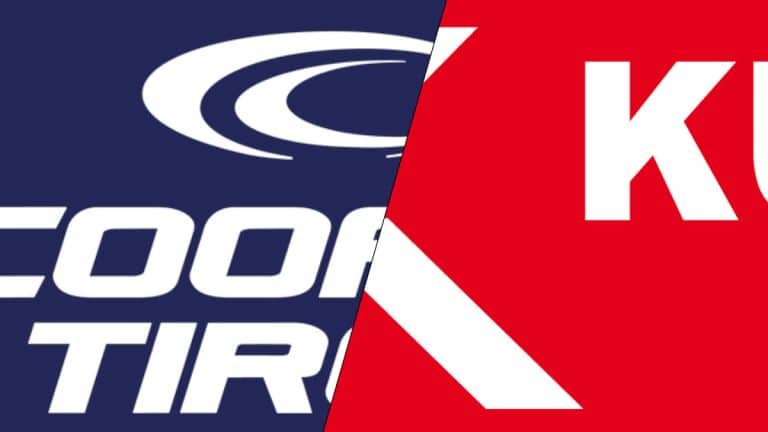Goodyear vs Michelin Tires – Which is Better?
Every now and then, I get a question about how I choose the tires I compare or review. Essentially, I put myself in the shoes of a person that needs to buy a new set of tires and start from there. The first step is to get an idea of which brands to look at, and considering the number of those, things can get confusing.
Tire brands are primarily categorized into 3 price groups which is where things start when it comes to picking one. The premium brands are the ones that have been on the market for the longest and have proven themselves to be worthy. An important note is that these brands are often the most expensive ones, so if the price isn’t your primary concern, you’d probably go after some of these.
Being part of the premium group means that you will pay more, but you’ll get more in terms of the tire. Better performance, longer warranty, or better refinement are only a handful of premium tires’ advantages.
There aren’t too many options in this segment, and I’ve chosen two of them, which should give you a great starting point. Today’s battle will be between a US and a French brand, both of which have offered excellent models for a very long time. The comparison you’ll be looking at is between Goodyear and Michelin, so let’s dive in.
Goodyear’s History
In the world of tires, Goodyear stands near the top as the best and most popular brand out there. The company has been in business since 1898 and was founded in Akron, Ohio making it among the first domestic brands. In terms of the name, the company wasn’t named after its founder Frank Seiberling. The name comes from Charles Goodyear, the man who invented the vulcanized rubber used in plenty of applications today.
The company’s earliest products were bicycle tires, mainly because cars weren’t as widespread as today. As soon as Henry Ford began making cars, the company reached out to Goodyear to supply them with tires for their models. Many people consider this the turning point that turned Goodyear into the brand we know and love today.
Goodyear is one of the few companies that aimed to revolutionize the tire industry. One of the many changes it brought to the table was the radial tire, which brought many advantages. At that time, the rest of the pack was still working with bias-ply tires, which changed the industry and helped Goodyear grow.
The innovations and improvements didn’t stop there. In the past years, thanks to the research, Goodyear implemented several technologies that make its tires as good as they are. On the performance sire of things, you have ActiveCornerGrip, ActiveBraking, and EfficientGrip, which improve traction, grip, and braking. For the touring tires, the company implements SoundComfort, WearControl, and SmartWear, which helps it improve the refinement and longevity of the models.
Some of the technologies that Goodyear implements into its tires come from the racing department. The company has plenty of experience with racing, but one of the bigger successes is in Formula 1. Despite not being a supplier since 1998, the company still holds the record for the most wins, something that brands like Pirelli are struggling to match to this day.
Looking at the success, it’s no wonder that Goodyear is among the best in the business and is considered a premium manufacturer.
Goodyear’s tire families
Goodyear takes a pretty standard approach in terms of tire families, making things simple when it comes to choosing the type of tire you’re looking for.
Assurance
The list starts off with the Assurance family, which is the common option for most people. Goodyear’s lineup of touring tires is designed to be longer-lasting and well refined, which most people are after. Even though these are touring tires, the brand aimed to make the tires perform well.
In the Assurance family, you have models like the Finesse, WeatherReady, ComfortDrive, Fuel Max, and CS Fuel Max. These touring tires are designed to be fitted to passenger tires, and all of them come in an all-season flavor. The tires’ naming scheme also determines the main feature of each tire.
Eagle
On the opposite end of the spectrum, you have the Eagle family of tires, which is Goodyear’s lineup of tires that you get if you’re after the best possible performance. Like most tires in this category, the primary goal is to provide the best grip and traction while sacrificing a bit in terms of noise and comfort.
When it comes to available options, the Eagle family offers a lot. The main models are Sport, Touring, LS, NCT, GT, RS, F1, and Exhilarate, all of which have a few sub-models. This means that more people can take advantage as the models cover plenty of use cases and sizes, making the Eagle family a very flexible one.
Ultra Grip
If you need a set of tires to drive in winter conditions, look no further than the Ultra Grip family of tires. Made to deliver the highest levels of grip and traction on snow and ice, these tires are ideal for people that drive in harsh winter conditions. On top of that, they can deliver a bit of sporty performance.
To ensure that the Ultra Grip covers a wide range of sizes, Goodyear offers the tire in the form of GW2, GW3, Ice WRT, 8 Performance, and Winter. When you combine all of these, you have a family of tires that can be fitted on anything from a small hatchback to a large SUV.
WinterCommand
You may be wondering why does Goodyear have two types of winter tires. Both families offer tires for winter driving, but the WinterCommand are tires that are studdable, meaning that you can get excellent performance on ice-covered surfaces.
As far as vehicle applications go, things are more or less the same as with the previous family. You have a wide range of vehicles that can benefit from the WinterCommand’s performance. With that said, an important thing to note is that not all sizes can be fitted with studs.
Wrangler
Some tire families need no introduction, and the Wrangler is one of them. A common sight in the off-road world, these tires are designed for vehicles capable of going off-road like SUVs, light trucks, and CUVs.
Even though the Wrangler family of tires can be fitted to off-road capable vehicles, there are tons of options to choose from. With over 20 different models, you are looking at tires for multiple conditions and sizes, meaning that you are looking for quite a flexible family. As a bonus, within the Wrangler tires, you have models designed for extreme off-roading – mud-terrain tires and ones that offer balanced performance on the road and off it – all-terrain.
EfficientGrip
There are people that want a tire that can provide a balance between comfort and performance, something that isn’t particularly popular, but Goodyear has tires for that. The EfficientGrip models can offer a well-refined experience on the road while still providing better performance than touring tires.
As part of the EfficientGrip family, there is the standard model and the Performance one. Both of them are summer tires, and despite being only two, they come in a wide range of size options, meaning that you shouldn’t have any problems matching one for your car.
Excellence
Looking at what the Excellence offers, it seems like Goodyear made two families with similar properties. These tires are very similar to what the EfficientGrip has to offer, meaning that you have a nice blend of performance and touring tires.
In terms of models, there are several to choose from, which is a bit of a step down from something like the Eagle or Assurance families. Despite that, each model comes in a wide range of size options, some of them even in smaller sizes, meaning that you shouldn’t have any problems matching them to any passenger car.
Fierce
The Fierce is another family of tires that fall in the less popular category. These tires overlap a bit with the Wrangler family, meaning that they are not designed for passenger tires.
The Fierce tires are the ones you’ll go after if you own an SUV or a light truck and want to take it off-roading but still have a tire capable of delivering decent performance on the road. Since these are all-terrain tires, it means that they can offer a good enough balance between off-roading and usability on the road, including refinement.
Frontera
Not all SUVs and light trucks get driven in off-road conditions, which is where the Frontera tires come into play. Designed as touring tires, these models are designed for off-road capable vehicles that will be driven on the road only.
There are two Fronter models, the SL and HL, covering slightly different applications. The HL tires are classic highway tires, offering decent performance and high levels of refinement. On the other hand, the SL models cover the same aspects but are a bit more sporty-oriented. Both models are all-season ones, meaning that there is some usability in light snow conditions.
Integrity
The last family of tires currently available from Goodyear is Integrity. Even though these seem similar to some of the other options on this list, the main selling point is the price. Unlike its cousins, these tires are designed to be more affordable, which means that they won’t exactly match the performance of the Assurance tires.
Even though the Integrity comes with only one model, the size options are pretty good and cover a smaller portion of the market. Essentially, these all-season tires are aimed at people that own older cars and don’t want to spend too much on a new set of tires.
Michelin’s History
Near the top, as one of the best tire manufacturers is Michelin. The company is around a decade older than Goodyear and was founded in 1889 in Clermont-Ferrand, France. Behind the company were the Michelin brothers that had the goal of making a tire for a bicycle that could be removed. The goal behind this was to shorten the time it takes to repair a damaged tire.
The company started off making tires for bicycles and initially launched with the now popular Michelin logo, the Bibendum. It wasn’t long after that the company’s success made the brothers supply tires for a long-distance bicycle race, leading to a race win. This was a massive step into pushing Michelin towards the car industry, which is where it sits strong today.
With well over a century under its belt, Michelin managed to bring plenty of innovations and improvements to the tire industry, which meant that tires evolved throughout the years. Among the many innovations that the company can get credit for is the introduction of run-flat tires.
Michelin took a swing at racing even in the early days of its existence, and it delivered very promising results. What started off as a supplier for a bicycle race turned into a very successful racing history. You are looking at a brand with countless victories in Le Mans, WRC, and Formula 1.
To achieve such results, Michelin focused on research and development, working on improving the tires it had. This means that the technology used in the racing series could be applied to the road-going tires, which is why they are considered to be one of the best.
Even though the company went through a bumpy road, it still managed to get on top and remain one of the best tire manufacturers on the market.
Michelin’s tire families
Michelin’s family lineup may seem similar to what Goodyear has to offer. Despite that, there are some differences and overlaps between families, which you’ll notice as I dive into each family.
Pilot
There’s no denying that some tire families “stick,” and Michelin’s Pilot family is one of them. Designed to offer the best performance possible, this family of tires is the best option for people looking for tires with the sportiest properties possible. For some models, you may even benefit from a well-refined tire.
Speaking of models, the Pilot lineup covers an extensive range of applications. You have models that range from performance to luxury while covering passenger cars, SUVs, and CUVs. As far as weather conditions go, you can find these tires in summer, winter, and all-season forms. As a bonus, this family of tires also has a few track-ready models.
Primacy
The Primacy family of tires is the opposite of what the previous one offered. Based on the performance and Michelin’s claims, these are touring tires designed to be well refined and offer a premium driving feel. They can also cover any vehicle type available in most weather conditions.
Branded as Primacy tires, you have models like Tour A/S, LTX, and MXM4, just to name a few. Thanks to the wide range of applications, you can fit these tires on any passenger car, CUV, SUV, or light truck. In terms of weather conditions, you have an option to choose between summer and all-season. Keep in mind that the Primacy 3 and HP are summer tires and can be fitted to passenger cars only.
Premier
Even though, on paper, the Premier lineup of tires seems like something that would fit in the Primacy family, Michelin decided to take this road. Like with the previous tires, these are designed for longevity, comfort, and low noise levels – true touring tires.
There are only two models, the A/S and LTX, both of which are all-season tires. As far as vehicle coverage goes, the A/S model is designed to fit most passenger tires, while the LTX is for larger vehicles like SUVs and CUVs.
Latitude
Even though you could find SUV, CUV, and light truck tires in some of the previous families, Michelin also has a dedicated lineup for these kinds of vehicles. The Latitude tires come in various models, covering a wide range of driving and weather conditions.
There are multiple models to choose from, but they generally come in the form of Tour, Alpin, and Sport. Technically these are touring tires but based on the names, you can probably guess that some of the models can deliver a bit sportier driving feel than the others. Also, based on the specific model, you can get them as all-season, summer, or winter tires.
X-Ice
Despite offering winter tires in other categories, Michelin also has a special winter family, the X-Ice. The goal of these models is to provide the best possible performance in winter conditions and cover as many vehicle types as possible.
There aren’t loads of options, but they do cover the entire segment quite nicely. You can choose between Snow or the Xi2 and Xi3 models, depending on the type of vehicle you have – passenger car or SUV, CUV, or light trucks. These are the non-studdable models, and if you want the best possible ice performance thanks to studs, you’ll need to look at the North tires.
Defender
The Defender lineup of tires covers a similar range of options like the Primacy. Despite that, the tires are designed with different technologies and offer a different kind of experience.
Looking at the options, you don’t have a lot to choose from. On the one hand, you have the T+H tires designed for passenger cars, SUVs, and CUVs. On the other hand, you have the LTX M/S tires for CUVs, SUVs, and light trucks. In both cases, you have all-season options designed with a long treadwear warranty and designed to offer a refined experience without sacrificing safety.
Energy
As part of the long list of touring tires, you can find from Michelin, there are also the Energy ones. This family of tires covers passenger cars, and the goal of these is to offer a comfortable and quiet driving experience with reduced rolling resistance. So not only do you get a well-refined tire, but you also have one that will be fuel-efficient without sacrificing safety.
You have 3 options to choose from here. The Saver models come in all-season and summer variants, while the LX4 are all-season tires only. In all 3 cases, the tires come with a decent range of size options, meaning that even smaller vehicles can take advantage of the performance they offer.
CrossClimate
The CrossClimate lineup is among the newer additions to the Michelin family of tires. These are all-season touring tires that manage to combine refinement and performance into a single package.
You can find the CrossClimate+ and CrossClimate 2 tires at the moment, as the original model isn’t widely available for sale. The two models come in sizes that cover vehicles ranging from the hatchback to the SUV segment. What makes these stand out from most of Michelin’s tires is the V-shaped tread pattern, which aims to bring plenty of improvements.
LTX
You may remember the LTX as individual models from some of the other families, but Michelin also has a dedicated tire family for these tires. Size-wise, the tires are aimed at CUVs, SUVs, and light trucks, and in some cases, you may find them to fit commercial vehicles.
The A/T2 is the model you’ll go for if you have a light truck or an SUV and you want to take it off-roading. Since it’s an all-terrain tire, it won’t perform the best in the most extreme conditions, but it’s a nicely balanced performer. The M/S2 is the road-only model that is considered to be a touring tire for larger vehicles. Both of these tires are all-season ones, so you can expect to get a bit of performance in lighter snow conditions.
Differences between Goodyear and Michelin
Looking at the family of tires, we can see that there are plenty of direct competitors between Goodyear and Michelin. As a result, the battle is fierce, and some differences make one or the other a better option.
Performance
Both brands are in the premium segment, meaning that their models offer some of the best-performing tires on the market. With that said, there are some differences between them, and I’ll explain them now.
The winner between these brands will depend on which tire sets we’re looking at. For example, the CrossClimate 2 is a tire that can outperform most touring tires that Goodyear has to offer. It’s not a massive difference, but Michelin has a bit of an edge.
On the other hand, when we compare winter tires, there are some conditions where the Goodyear UltraGrip Ice 2 performs slightly better than the Michelin X-Ice Snow. In this category, we are looking at very minor differences that can only be noticed when you dive at the limit.
What about the performance options? Well, take the Pilot Sport All-Season 4 and the Eagle Exhilarate, both of which are performance-oriented all-season tires. Picking one that’s better than the other is very difficult because these two are very close. One area where Goodyear is a tad better, in my opinion, is the handling and the tire feels a bit livelier, in a positive way.
Things are more or less similar when comparing the Pilot Sport 4S and the Eagle F1 Asymmetric 2. They are exceptional summer tires capable of delivering superior performance, but there are some differences. The Michelin model is superior in dry conditions, including braking, handling, and the performance it offers. While Goodyear isn’t too far behind, the tire seems to do much better than the Michelin one in wet conditions.
One area where Michelin falls very short is in terms of off-roading. Yes, there is one all-terrain model from the French brand, but it cannot battle against the off-road capable tires that the Wrangler family offers. In this regard, the crown goes to Goodyear, mainly because Michelin has no that cover those segments.
Available Options
When it comes to available options, Michelin and Goodyear have a more or less similar number of tire families, so you probably think that they are evenly matched? Well, not exactly.
Both brands offer plenty of models for the road-going tires, but for different categories. Goodyear seems to have slightly more, but the problem is that its tires are divided based on what they do best. Tires like the Fuel Max are designed for low rolling resistance, while the Energy family of tires covers multiple areas. Things seem to be more or less even for performance tires, mainly because you have a plethora of options from both brands. In general, the touring section is where Michelin has a bit of an edge because some of its older models are still up for sale, meaning that you can even save a few bucks on that.
I praised Goodyear for the off-road capable tires, and the same can be said about the available options. Michelin isn’t the best brand to go for if you’re looking for all-terrain or mud-terrain tires, mainly because the options are limited or nonexistent. On the other hand, Goodyear has an entire family of tires dedicated to those driving conditions.
Overall, unless you’re looking for tires that can go off-roading, the available options aren’t terrible in both brands, so whichever one you go after won’t be a mistake.
Price
Price comparisons are difficult when it comes to an entire brand. The main reason is that each tire model is priced differently, and you cannot compare both of them as a whole. The same can be said about the Goodyear and Michelin brands, so things aren’t as straightforward.
As an unwritten rule, Michelin is a tad more expensive, but that’s not always the case. Let’s compare the CrossClimate2 with the Eagle LS-2, both of which are all-season grand touring tires. The Michelin option is roughly $40 cheaper than a similarly sized 17-inch model from the Goodyear lineup.
On the other side of the spectrum, when you compare two popular all-season UHP tires, the Pilot Sport All-Season 4 and the Eagle F1 Asymmetric All-Season, you get the opposite result. A 19-inch model is roughly $50 more expensive on the Michelin corner when compared to the Goodyear one. I do have to point out the speed rating of the Pilot Sport All-Season 4 is a bit higher.
I cannot say that one or the other is cheaper because things are pretty mixed up. You may find models which favor Michelin as the winner, while others may lean towards Goodyear.
Warranty
You may have read me saying that Michelin isn’t offering the longest warranty in the premium segment, and that is true. When it comes to comparing it to Goodyear, things don’t seem too positive for the US brand. For the most part, you are getting a similar treadwear warranty, a couple of thousand more or fewer miles.
With that said, some differences favor Michelin with the Pilot Sport 4S against the Eagle F1 Asymmetric 5. The French tire comes with a 30,000-mile treadwear warranty, while the one from Goodyear doesn’t have any.
Advantages of Goodyear
- Better off-road capable options
- Some of the performance tires may offer slightly livelier handling
- More of the winter tires can be fitted with studs
Advantages of Michelin
- Some performance tires offer a treadwear warranty
- Touring tires feel like better overall packages
- Track focused tires provide a bit better performance
Which brand to choose?
Comparing two premium brands isn’t easy. They didn’t reach the top by being bad or providing poorly performing tires, and considering how good both of them are, it’s difficult to say which one to go for.
In terms of tires that will get driven on paved roads, both brands have their advantages, so it’s not too simple to pick one as the better one. Some models from Michelin’s lineup are better in some areas than Goodyear’s and vice versa. My recommendation for this is to check out individual reviews of the models you plan to buy and make a comparison there. In my reviews, I aim to compare how one tire compares to another from a different brand, which should help make things simple.
For off-roading, the choice is much easier, and the winner is Goodyear. The company has proven itself to be an excellent all-terrain and mud-terrain manufacturer, making Michelin fall in its shadows.
At the end of the day, regardless of which brand you go for, you shouldn’t have massive issues with either of them, as long as there are strong contending models in the category that you’re looking for.
